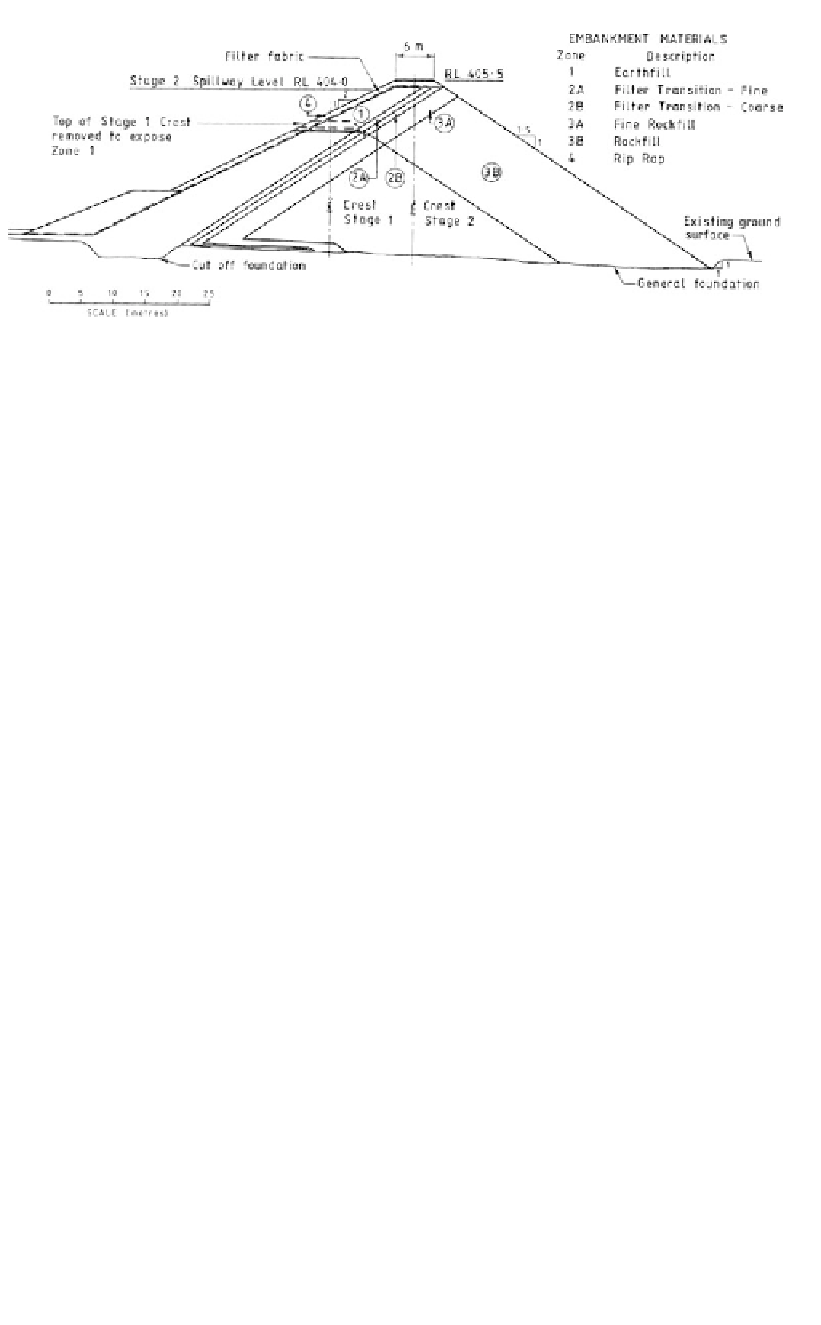Environmental Engineering Reference
In-Depth Information
Figure 19.24.
Staged construction - proposed Ben Lomond tailings dam (Coffey and Partners, 1982).
-
Staged construction is usually required, favouring sloping upstream core type cross
sections.
Figure 19.24 shows an example of staged construction which minimises the volume of
fill in each stage.
19.5.4
Selection of embankment construction method
The method to be used will depend on the particular circumstances at the mine, e.g. type
of tailings, production rate, climate, local topography, seismicity, availability of waste
rock, regulatory authority requirements etc.
All methods allow staged construction of the embankment. This is the significant dif-
ference between water storage dams and tailings embankments and allows minimisation
of up-front capital works and improvement of overall economies.
Table 19.8
, which is adapted from Vick (1983), compares the different methods of
embankment construction.
One important factor in selection of embankment type is the degree of seepage control
achievable. This is vital, because it determines the stability of the embankment and the
steepness of the downstream slope.
Figure 19.25
shows that downstream construction allows
best control, followed by the centreline method, and upstream construction.
Figure 19.26
shows that, by providing internal drainage layers control of seepage can be engineered.
However this is only achieved at a cost penalty. Blanket drains may not be effective if the
tailings are layered (as often occurs) because the water table perches on low permeability
layers of tailing.
19.5.5
Control of seepage by tailings placement, blanket drains and underdrains
19.5.5.1
Tailings placement
Vick (1983) and Blight (1987, 1988) discuss the benefits of sorting the tailings particles in the
beach zone. This sorting can lead to a gradation of permeability from high near the dis-
charge point decreasing towards the pond and hence a lower phreatic surface.
Figure 19.27
shows this effect schematically and the effect of having the water pond near the embank-
ment crest and the underdrainage effect of a high permeability soil or rock foundation.
Stauffer and Obermeyer (1988) discuss a case where piezometric pressures were lower
than might otherwise have been expected, because of the underdrainage effect of a rela-
tively high permeability foundation.

